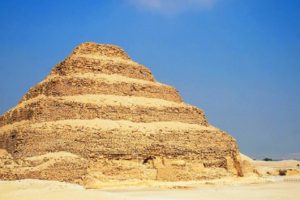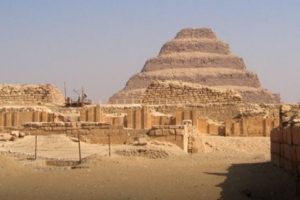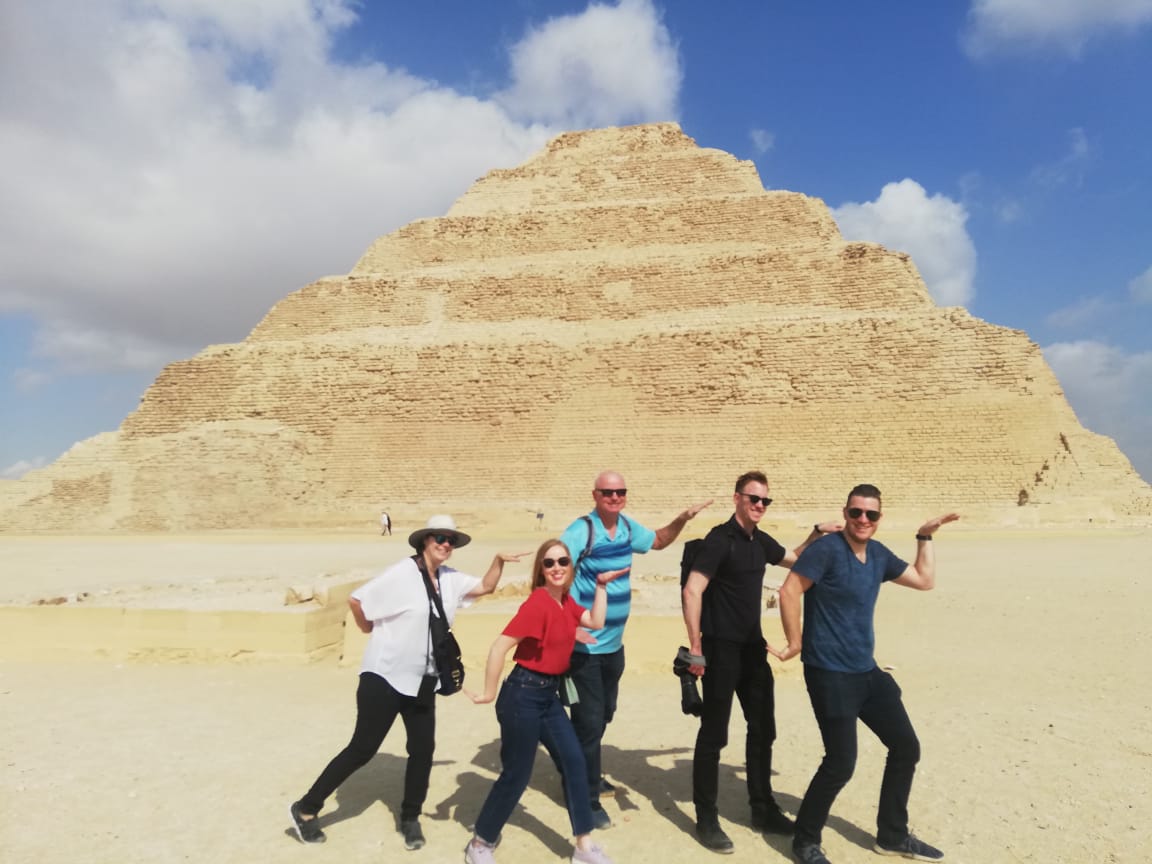Sakkara (sometimes called Saqqara) is one of the most extensive archaeological sites in all of Egypt! It was the primary cemetery of the former capital of Egypt, Memphis, yet it is still one of the most unexplored archaeological sites, despite the amazing finds that have already been discovered? What else may be hidden among the site?
The site’s most major feature is the Step Pyramid of King Zoser, which dates back to 2700 BC. It is one of the oldest stone structures in the world!
Sakkara is also the site of many tombs through the 1st and 2nd dynasties. Most are made out of mud bricks, but some tombs are made of limestone and decorated with daily life scenes. The ancient artwork is truly remarkable
Sakkara is divided into two parts:
-Southern Sakkara, which is dominated by the step Pyramid.
-Northern Sakkara, which is dominated by the pyramid of King Titi, and the mastaba tombs of the Old Kingdom.
The Step Pyramid
It was built for King Zoser, one of the greatest kings of the third dynasty (2721-2780 BC). Originally meant as a tomb, this pyramid was designed and built by his great architect Imhotep. It was built as a step pyramid, 60m high, and consists of 6 steps; each one built on top of the other, gradually getting smaller in size as the steps ascended.

Today it is considered as one of the oldest stone structures built by man! And, the first time the Ancient Egyptians would attempt to use limestone! Zoser’s Pyramid is built entirely of limestone, small bricks of limestone, and honestly, not of the best quality, and yet it has remained for more than 4700 years! It is simply mind-boggling!
The Pyramid’s four sides are very nearly aligned with the four cardinal points. On the northern side is the original entrance of the pyramid. On the north-western side, you will notice a little room that is built with a gradient angle, similar to the pyramid itself. In there was found a beautiful statue of King Zoser made of limestone. It was moved to the Egyptian museum in Cairo and replaced by a replica. The northern entrance is no longer safe to traverse and closed to the public. Any people, granted entrance into the pyramid, must use the second entrance, created all the way back in the 26th dynasty, located on the southern side of the pyramid. I have frequently been allowed, into this amazing pyramid, working with TV crews, that went around Sakkara with me. However, I needed special permission to do this.
If you go underneath the pyramid, there is a strange feeling that haunts you, especially when you remember that you are exploring 4,700 years of time. As you descend you see a maze of little corridors and tunnels! Found in some of these tunnels were more than 30,000 jars, made out of various types of stone, such as alabaster, marble, diorite, and slate.
To the southern side of the pyramid, you will find a burial shaft, located almost 28 meters deep, which is believed to be a symbolic tomb for the king, as kings of the first three dynasties used to build two tombs for themselves; one a real tomb and the other, a cenotaph (commemorative tomb). The pyramid is surrounded by an impressive rectangular enclosure wall that measures 277m by 544m, it lies mostly ruined today, but in its glory, it was 10m high. You can still see parts of it today.
In the wall’s southeastern area, is the entrance to the complex and most of what’s through this door has been recently restored! At the end of the little hall is an illusion of two doors, swung open as if to welcome you in. The entrance leads you to a colonnade consisting of 40 columns. Each column is attached to the wall behind. This style is called engaged columns, and they were built to ensure that the ceiling was supported and there was no danger of collapse. In-between the columns, a large number of small rooms was created; the rooms once contained statues representing King Zoser as ruler of Upper and Lower Egypt. The long hypostyle (supported by columns) hall leads to an open courtyard, which was used by the king, to perform the rituals of the jubilee feast, called the Heb-Sed festival. One of the rituals performed by the kings of Ancient Egypt to ensure that they are able to rule the country for the next 30 years. To the right of this open courtyard, Imhotep built a temple known as the Heb-Sed Temple, so that the king would be able to practice this ritual in the afterlife.
Behind the temple, and further north, are two buildings one in front of the other; they are called the northern and southern houses, where the king is supposed to host the dignitaries who have come to attend the king’s ritual in the temple, and he recognize him as a king of Upper and Lower Egypt.
Next to the Step Pyramid complex, on the southern side, you will see the ruined Pyramid of King Unas, which dates back to the end of the 5th dynasty. It was the first pyramid where inscriptions were found to be decorating the walls of the burial chamber! There are more than 700 incantations, which are supposed to help the dead king throughout the afterlife, and they are known as the Pyramid Texts. The Unas pyramid is now opened to visit till 12:00 p.m. daily, after it has been closed for several years.



